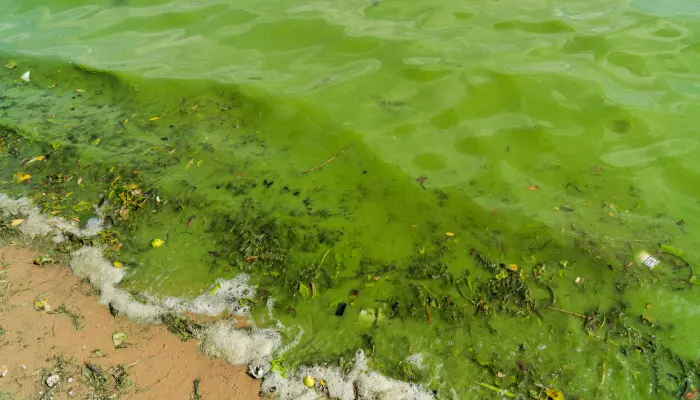
Impacts of oil spill incidences on levels of polycyclic aromatic hydrocarbons (PAHs) in coastal areas of Asian Countries
Abstract
Polycyclic Aromatic Hydrocarbons (PAHs) can be classified as Persistent Organic Pollutants (POPs), which are toxic pollutants that can be preserved in various environmental compartments (ChooChuay et al., 2020a, 2020b; Deelaman et al., 2020; Pongpiachan, 2015; Pongpiachan et al., 2010, 2013, 2018, 2019). After they are emitted into the atmosphere, they will rapidly distribute between gaseous and particulate phases (Dachs & Eisenreich, 2000; Kaupp & McLachlan, 1999; Simcik et al., 1998). This gas–particle partitioning mechanism plays a crucial role in governing atmospheric fate of PAHs (Aky?z & ?abuk, 2010; Degrendele et al., 2016; Fern?ndez et al., 2002).
Subsequently, PAHs continue to be transported from warmer to colder regions of the planet through the geochemical process called ‘global distillation’ or ‘the grasshopper effect’ (Degrendele et al., 2016; Gouin et al., 2004; Wang et al., 2007). Previous studies highlight its adverse health impacts such as lung cancer (Liao et al., 2011; Sarigiannis et al., 2015), breast cancer (Bonner et al., 2005; Parikh & Wei, 2016), impaired lung function in asthmatics and thrombotic effects (ACGIH, 2005), kidney dysfunctions (Singh et al., 2016), redness and inflammation of the skin (Khairy et al., 2009), and other acute symptoms including eye irritation, nausea, vomiting, diarrhea, and confusion (B?lling et al., 2009). In consequence the International Agency for Research on Cancer (IARC) categorizes some PAHs as acknowledged, potentially, or probably carcinogenic to humans (Group 1, 2A or 2B) (IARC, 2010). Among these congeners are benzo[a]pyrene (Group 1), naphthalene, chrysene, benzo[a]anthracene, benzo[k]fluoranthene and benzo[b]fluoranthene (Group 2B) (IARC, 2010). Since they pose a risk to the environment and human health globally, the Stockholm Convention on Persistent Organic Pollutants commits to take appropriate measures to prevent the emissions of PAHs into the environment or at least reduce such emissions as far as is technically feasible and economically acceptable (Lallas, 2001).
It is well known that primary sources of PAHs result from both anthropogenic (e.g., vehicle releases, industrial emissions, domestic heating) and natural emissions (e.g., forest fires, volcano eruptions) (Kim et al., 2003; Kozak et al., 2017; Lohmann et al., 2000; Pongpiachan et al., 2017; Slezakova et al., 2013; Yang et al., 1998, 2002). In contrast, secondary sources occur from the generation of a pollutant in the ambient air from both the homogeneous and heterogeneous chemical reactions of precursors emitted from air pollution contributors, for example nitro-PAH formation from heterogeneous reactions of PAHs with NO2, NO3/N2O5, and OH radicals (Jariyasopit et al., 2014; Zhang et al., 2010, 2011). Conclusively, a re-volatilization source results from both primary and secondary pollutants depositing on terrestrial soils (e.g., resuspended particles) or lake, riverine, and marine surfaces, followed by re-volatilization to the ambient air (Cabrerizo et al., 2014; Ma et al., 2011).
Over the past few decades, the prominence of oil spill incidents has raised public concerns about the accumulation of PAHs in coastal and marine deposits around the world (Nwaichi et al., 2016; Onojake et al., 2013; Pongpiachan et al., 2018; Seegar et al., 2015; Veiga et al., 2010). This process is a result of several unique features and physicochemical properties of PAHs. Firstly, PAHs are comparatively persistent in the environment; this is a consequence of their relatively strong aromatic ring structure which means they are not particularly vulnerable to photochemical decomposition and homogeneous/heterogeneous chemical reactions, enabling them to possess long environmental lifetimes (Arey, 1998; Malloci et al., 2003; Miller & Olejnik, 2001). Secondly, PAHs are hydrophobic organic compounds, indicating that convective precipitation is not effective in transferring these toxic congeners from atmosphere to terrestrial surface (Lim et al., 2007; Ozaki et al., 2006; Park et al., 2002). Thirdly, PAHs can undergo both bioaccumulation and biomagnification, suggesting that animals near the top of the food chain are most affected because of these processes (D’adamo et al., 1997; Froehner et al., 2011; Tao et al., 2018). Although many investigations have focused on clarifying the aquatic fate of PAHs in riverine sediments, marine deposits and coastal soils, little is known about the chemical characterization, diagnostic binary ratios, and ecotoxicological studies associated with PAH congeners. Overall, the major aims of this chapter are (i) to comprehensively review both spatial and temporal distribution of PAH congeners in oil spills contaminating coastal areas around the world, (ii) to investigate the diagnostic binary ratios and source apportionment of PAHs in the polluted sites, and (iii) to both quantitatively and qualitatively evaluate the ecotoxicity of PAHs in the oil spill areas with the assistance of risk assessment models.
